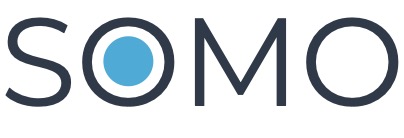Citizen Generated Data (CGD)
1. Techniques for Community Needs Assessment
Community needs assessments are essential for identifying the gaps, challenges, and opportunities within a community. These assessments enable the development of projects and interventions that are closely aligned with the actual needs and priorities of the community. Several techniques are commonly used to conduct community needs assessments, including surveys, interviews, focus groups, and participatory appraisal methods.
A. Surveys
Surveys are structured tools used to collect quantitative or qualitative data from a large number of people. They are one of the most efficient ways to gather information about a community's needs, preferences, and challenges.
-
Benefits:
- Can reach a large audience quickly.
- Data is relatively easy to analyze using statistical methods.
- Anonymous responses may encourage honesty.
-
Challenges:
- Limited depth of information.
- Response rates can vary.
- Requires careful question design to avoid biased or leading questions.
-
Best Practices for Surveys:
- Use clear, concise language that is easy to understand.
- Ensure questions are relevant to the needs assessment.
- Use both closed (multiple choice, yes/no) and open-ended questions for deeper insights.
- Consider digital platforms (e.g., Google Forms, SurveyMonkey) or paper-based methods based on the target community’s accessibility.
B. Interviews
Interviews involve one-on-one conversations with community members to gain a deeper understanding of their needs and experiences. They are typically more in-depth than surveys and allow for probing questions.
- Benefits:
- Can provide rich, detailed information.
- Allows for clarification and follow-up questions.
- Builds rapport and trust with participants.
- Challenges:
- Time-consuming, especially with larger populations.
- Responses can be difficult to analyze due to the qualitative nature of the data.
- Best Practices for Interviews:
- Prepare a semi-structured interview guide with open-ended questions.
- Ensure the interviewer is trained in active listening and probing techniques.
- Record interviews (with consent) to ensure accuracy in capturing information.
C. Focus Groups
Focus groups involve facilitated group discussions where participants share their views and experiences about specific community issues. These discussions are particularly useful for exploring diverse perspectives within the community.
- Benefits:
- Encourages discussion and interaction among participants.
- Can uncover community-level dynamics and priorities.
- Helps identify consensus or differing viewpoints.
- Challenges:
- Group dynamics can sometimes prevent quieter participants from sharing their views.
- Requires skilled facilitation to avoid dominance by certain individuals.
- Best Practices for Focus Groups:
- Keep group sizes manageable (6-12 people) to ensure everyone has a chance to speak.
- Use a skilled facilitator to manage discussions and ensure all voices are heard.
- Provide a safe and comfortable environment where participants feel free to express their opinions.
D. Participatory Appraisal Methods
Participatory Appraisal (PA) methods are a set of approaches designed to actively engage community members in identifying and analyzing their own needs. These methods are often highly interactive and involve tools such as community mapping, ranking exercises, and timelines.
- Benefits:
- Promotes community ownership of the assessment process.
- Facilitates in-depth understanding of community dynamics.
- Encourages inclusive participation, especially from marginalized groups.
- Challenges:
- Requires skilled facilitators with experience in participatory techniques.
- The process can be time-consuming, particularly in large communities.
- Best Practices for Participatory Appraisal Methods:
- Use visual tools (maps, charts, timelines) to engage participants.
- Ensure diversity among participants to gather a wide range of perspectives.
- Use PA techniques in conjunction with other methods (e.g., surveys, interviews) to validate and enrich findings.
2. Setting SMART Objectives
Once the community’s needs are identified, the next step is to develop objectives for the project or initiative. The SMART framework helps ensure that objectives are clear and actionable. SMART stands for Specific, Measurable, Achievable, Relevant, and Time-bound.
A. Specific
The objective must be clear and well-defined, leaving no room for ambiguity. A specific objective identifies what will be accomplished, by whom, and where.
- Example:
"Increase access to clean drinking water in the rural community of [Community Name] by installing five new water pumps."
B. Measurable
The objective must include criteria for measuring progress and outcomes. Measurable objectives help track success and ensure accountability.
- Example:
"Reduce the rate of absenteeism in [Community Name] primary school by 10% within the next academic year."
C. Achievable
The objective must be realistic and attainable, considering the available resources, time, and context. Setting overly ambitious objectives can lead to frustration and failure.
- Example:
"Train 50 local community health workers within six months, using existing health education resources and local trainers."
D. Relevant
The objective must address an identified need or priority within the community. It should align with broader goals, such as improving community well-being, health, or infrastructure.
- Example:
"Promote the use of renewable energy sources in [Community Name] to reduce household reliance on firewood, thereby improving environmental sustainability."
E. Time-bound
The objective must have a specific timeframe for completion. A deadline creates urgency and ensures that the objective remains a priority.
- Example:
"Increase access to affordable healthcare services for [Community Name] by establishing a community clinic within 18 months."
3. Engaging Community Stakeholders in the Needs Identification Process
Engaging community stakeholders throughout the needs assessment process is essential to ensure that projects are aligned with the actual needs and priorities of the community. Stakeholders include local leaders, community members, NGOs, government agencies, and other groups directly or indirectly affected by the project.
Benefits of Engaging Stakeholders:
-
Increases Community Buy-In:
When stakeholders are involved from the beginning, they are more likely to support and take ownership of the project. -
Ensures Alignment with Community Priorities:
Projects that are developed in isolation may not address the most pressing needs. Engaging stakeholders ensures that the initiative addresses issues that are important to the community. -
Provides Diverse Perspectives:
Different stakeholders bring unique viewpoints, knowledge, and experiences, which can lead to more comprehensive and effective solutions. -
Builds Trust and Transparency:
Open dialogue with stakeholders helps build trust and ensures transparency in the decision-making process.
Best Practices for Stakeholder Engagement:
-
-
Early and Continuous Engagement:
Engage stakeholders early in the process, ideally before the needs assessment begins, and continue to involve them throughout the project’s lifecycle. -
Use a Range of Engagement Methods:
Utilize various methods to engage stakeholders, such as community meetings, focus groups, interviews, and participatory appraisal methods, to ensure that all voices are heard. -
Foster Collaborative Decision-Making:
Encourage a collaborative approach where stakeholders have an active role in decision-making, rather than being passive recipients of information. -
Ensure Inclusivity:
Make special efforts to include marginalized or underrepresented groups, such as women, youth, and people with disabilities, to ensure that their needs are considered. -
Communicate Clearly:
Keep stakeholders informed about the progress of the project, and communicate clearly about how their input is being used.
-


